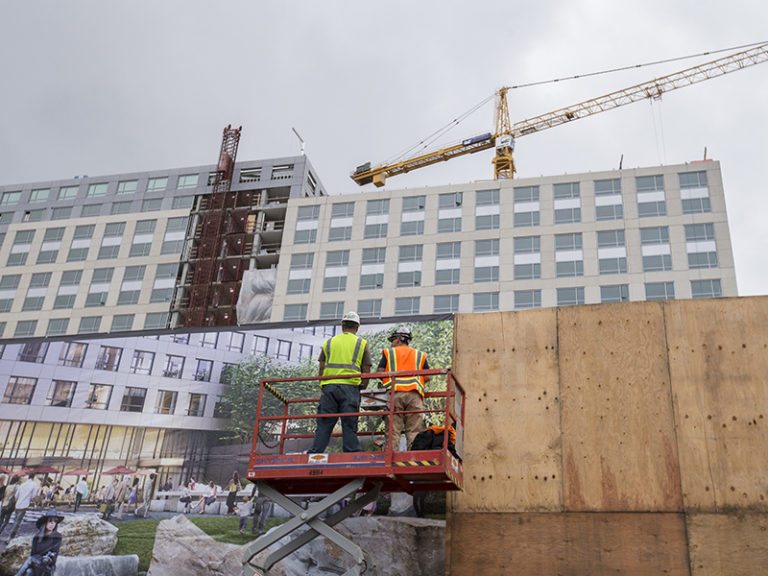CASA: The most important housing deal you’ve never heard of
By Peter Cohen and Fernando Martí, San Francisco Examiner
The most important package of development policies for the Bay Area — that you’ve probably never heard of — is being decided today.
Going by the name of CASA (few people involved seem to remember what the acronym stands for), this invite-only assembly of movers and shakers was convened in late 2017 to craft a “grand bargain” with market-rate developers in exchange for their support for affordable housing.
The CASA committee includes market-rate developers, landlord interests, tech industry representatives, the building trades, regional affordable developers, the mayors of San Francisco, Oakland and San Jose, and a handful of other elected officials, and is staffed by the Metropolitan Transportation Commission (MTC). Neither the elected members of the MTC Commission itself or the Association of Bay Area Governments have direct oversight or voting power in CASA.
For housing and social justice organizations, this structure without accountability seemed very troublesome from the beginning.
Organizers tried to press “do no harm” and racial equity demands into the process, including that tenant protection policies be put in place before or simultaneously with any development incentives.
The few tenant and equity advocates formally at the Committee table successfully used that outside pressure to reframe CASA’s overall objectives around the “Three P’s” of affordability: PROTECTING tenants, PRESERVING at-risk housing stock, and increasing PRODUCTION of affordable housing as well as market-rate housing in appropriate locations.
So, what did the CASA process result in?
After a year of monthly public meetings and two months of negotiations among committee members, the process has produced a “CASA Compact” composed of 10 separate elements.
Thanks to the work of advocates such as PICO California, Working Partners USA and Tenants Together, and persistence by Fred Blackwell as one of the CASA co-chairs, the compact includes a commitment to regional tenant protections such as just cause eviction laws and a 15-year emergency rent gouging cap.
Affordable housing advocates, too, got commitment on a regional funding measure for affordable production and preservation. This “mega-measure” will require a multi-county electoral strategy that will depend on building political goodwill toward the whole process by the affected communities on the ground.
But the major point of contention from the beginning, and the biggest risk to blowing the whole thing up, has been deciding where private development should be steered in order to increase market-rate production.
Should CASA’s goal be to accelerate development approvals and risk increasing the pace of gentrification of working-class communities in core urban areas? Or should it be to steer development toward the suburbs by incentivizing new lower-cost infill housing throughout the region, to replace the sprawl tract home model that collapsed in the 2008 financial crisis?
The real estate interests in CASA, unfortunately, seem to be mainly focused on incentives in urban core neighborhoods and hot market cities.
The Big Three cities of the region — San Francisco, Oakland and San Jose, which carry responsibility for almost 45 percent of the entire region’s housing — have already exceeded their goals for market-rate production, and have huge backlogs of approved units that aren’t being financed due to the glut of high-end development. Further market incentives in those hot market cities will likely lead to land speculation rather than actual homes, and make it harder for neighborhood-based affordable developers to compete for land to serve their communities.
What is missing in the CASA Compact?
The final draft “compact” needs to incorporate an understanding of the importance of geography that: a) allows communities at risk of gentrification and displacement to decide for themselves on market-rate upzoning and streamlining incentives; b) respects existing local plan areas that communities have fought hard for; and c) provides a limited deferral for other neighborhoods in the Big Three hot-market cities (which already meet market-rate goals in order to complete their own local plans for development).
Without this explicit and logical geography framework to guide where and how market-rate incentives are appropriate, CASA will have disastrous results in already hot market communities.
There are other problematic elements of the draft compact, all fixable with the will of the CASA Steering Committee.
The CASA Committee’s vote today is a litmus test for the success or failure of this aspirational model of a “grand bargain” put together by the Bay Area’s movers and shakers. The risk of an overly aggressive CASA compact alienating voters against affordable housing is reason for concern after such success over the last few years on funding measures. Today’s vote will reveal whether the CASA leaders are listening to equity advocates.
This article was originally published in the San Francisco Examiner.

